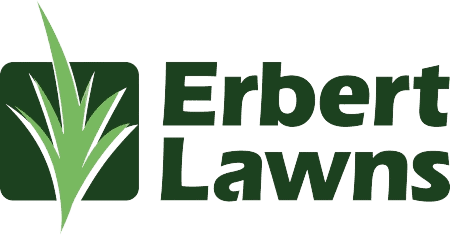Are you tired of gazing at a lackluster lawn that lacks the vibrant green hue you desire? Maintaining a healthy and lush lawn requires more than just regular watering and mowing. To achieve the lawn of your dreams, you need to establish a good lawn care schedule that covers all the necessary tasks throughout the year. Welcome to our comprehensive guide on lawn care schedules, where we will delve into the essential elements that will assist you in creating a picturesque lawn that will undoubtedly turn heads in your neighborhood. Before we delve into the detailed aspects of a thorough lawn care plan, let’s pause and genuinely acknowledge the significance of nurturing a verdant and meticulously cared-for lawn. Our team of dedicated professionals at Erbert Lawns is committed to working closely with you to develop a tailored lawn care program that will elevate your lawn to a state of unparalleled lushness and beauty. With our expertise and personalized approach, we will transform your lawn into a verdant paradise that will be the
A lush and healthy lawn not only adds beauty and curb appeal to your property but also offers a range of benefits for you and the environment.
A healthy lawn not only enhances the aesthetics of your property but also provides numerous environmental benefits. Lawns act as natural air purifiers, absorbing carbon dioxide and releasing oxygen. They also prevent soil erosion and help to filter rainwater, protecting water quality.
Now let’s explore the key components of a good lawn care schedule:
Regular Mowing
Proper mowing is the cornerstone of any effective lawn care routine. It helps to control the height of the grass and promote healthy growth. However, it’s critical to abide by the one-third rule: avoid trimming more than one-third of the grass blade’s height in a single instance. Regular mowing, at the appropriate height for your grass species, will ensure an even and well-maintained lawn.
Adequate Watering
Watering your lawn is crucial, especially during dry periods. However, it’s important to strike the right balance. Overwatering can lead to shallow root growth and the growth of weeds, while underwatering can cause stress and brown patches. The best approach is to water deeply but infrequently, allowing the soil to dry out between watering sessions.
For more detailed information and specific guidelines about watering, you can visit the United States’ National Oceanic and Atmospheric Administration (NOAA), which provides valuable advice on climate patterns and watering considerations.
Fertilization
Fertilizing your lawn provides the essential nutrients necessary for robust growth and vibrant color. It’s recommended to use a slow-release fertilizer that will gradually feed the grass over an extended period. Be sure to follow the manufacturer’s instructions and avoid over-application, as excessive fertilization can damage the grass and harm the environment.
Weed Control
Weeds are the nemesis of a beautiful lawn, competing with grass for essential nutrients and sunlight. Implementing a weed control program is vital to keep your lawn weed-free. This might include manually uprooting weeds, targeted use of herbicides, or applying pre-emergent herbicides to inhibit the germination of weed seeds.
It’s essential to choose the appropriate weed control methods for your specific lawn and follow the instructions carefully.
Aeration and Overseeding
As time progresses, the soil under your lawn can become densely packed, obstructing the flow of air, water, and vital nutrients to the root system of your grass. Lawn aeration, which involves perforating the soil with small holes, alleviates compaction and promotes better circulation. Overseeding, on the other hand, helps to thicken the grass and fill in bare spots. Aeration and overseeding are typically performed in the early spring or fall for optimal results.
Soil Testing
Understanding the composition and pH level of your soil is essential for effective lawn care. Conducting a soil test can provide valuable insights into its nutrient content and acidity. Based on the results, you can adjust your fertilization approach and apply soil amendments, such as lime or sulfur, to create the optimal growing conditions for your grass.
Pest and Disease Prevention
Preventing pests and diseases is always preferable to dealing with an infestation or outbreak. Regular monitoring of your lawn is key to identifying early signs of pest damage or disease. Enacting preventative strategies, like adequate watering and suitable fertilization, can bolster the health of your grass, enhancing its resistance against pests and diseases.
Seasonal Adjustments
Adapting your lawn care routine to the changing seasons is crucial. Different times of the year require specific tasks to address the unique needs of your lawn. For example, during spring, focus on aeration, overseeding, and addressing weed control. Summer maintenance may involve adjusting watering schedules and managing heat stress. Fall is the time to prepare your lawn for winter by raking leaves, applying winter fertilizer, and removing debris. Stay attuned to the seasonal requirements of your lawn to ensure optimal health.
After exploring the vital aspects of a comprehensive lawn care program, the moment has arrived to take proactive steps and grow the lush, green lawn you’ve always envisioned.
For more information on proper lawn care techniques explore our comprehensive range of services. Transform your lawn into a lush sanctuary with the help of our expert team.
Additionally, you can find valuable resources and guidelines on lawn care from the United States government websites:
United States Department of Agriculture (USDA): https://www.usda.gov/
The USDA’s website provides a wealth of information on various topics related to agriculture, including lawn care and environmental considerations. You can access helpful resources and guidelines to ensure the health and sustainability of your lawn.
Environmental Protection Agency (EPA): https://www.epa.gov/
The EPA regulates environmental issues in the United States, including pesticide safety and regulations. Their website offers valuable information on pesticide use, best practices for lawn care, and tips for maintaining a healthy and sustainable lawn.
Frequently Asked Questions
Q: When is the best time to mow my lawn?
A: It’s best to mow your lawn when the grass is dry, typically during the morning or early evening.
Q: How often should I water my lawn?
A: The frequency of watering depends on various factors such as soil type, grass species, and weather conditions. As a general guideline, aim for one inch of water per week, including rainfall.
Q: Can I use regular garden fertilizer on my lawn?
A: While garden fertilizer may contain similar nutrients, it is important to use a fertilizer specifically formulated for lawns. Lawn fertilizers have a balanced nutrient ratio designed to meet the specific needs of grass.
Q: How do I identify and control lawn pests?
A: Identifying lawn pests can be challenging, but signs such as brown patches, tunnels, or chewed grass blades may indicate their presence. Consult with a lawn care professional to accurately identify pests and determine the best control methods.
Q: Is it necessary to remove grass clippings after mowing?
A: No, it is not necessary to remove grass clippings. In fact, leaving them on the lawn can provide valuable nutrients and act as a natural mulch, promoting healthy growth.










